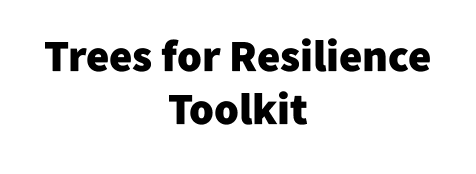POLICY & PLANNING
How to Make Sure Trees and Forests Are Integrated
Policies and plans are the foundation on which a jurisdiction states what is vital and necessary for a healthy and vibrant community. Every initiative and mandate provides an opportunity to collaborate, coordinate, and integrate tree canopy and urban forests into guiding principles, documents, and strategies toward implementation.
Considerations about Policy & Planning
Adoption of policies and plans by jurisdiction’s decision makers is critical for success.
Include long-term visioning with short-term strategies and action steps.
- Involve ALL stakeholders in the development of policies and plans, including impacted departments and the community.
- Regularly update and incorporate language, principles and practices between complementary policies and plans.
Resource Links by Topic
Urban Forestry
Stormwater
Smart Growth
Climate Action/Sustainability
Equity
- Urban Forestry Management Plan (Tacoma) – A strategic plan for Tacoma’s urban forest with a Phase I research summary and Phase 2 action plan.
- Urban Forest Strategic Plan (Snoqualmie) – A city-wide plan based on priorities and opportunities to enhance the valuable community forest. Timelines, tasks, and partnerships are identified.
- How to Write a Municipal Tree Ordinance 2017 (Arbor Day Foundation) – Multiple resources for understanding and planning municipal tree ordinances.
- Urban Forestry – WA cities’ Statutes, Plans and Programs – The Municipal Research and Services Center (MRSC) compiled guidance and examples of tree ordinances, plans, programs, regulations, and recommended resources for local governments in Washington state.
- Urban Forests for Healthier Cities – A guide for decision makers, planners, and stakeholders on the topics of policy, planning, regulation, and institutional arrangements around the urban forest.
- King County 30-Year Forest Plan – A recent plan that identifies seven priorities county-wide including climate, urban forest canopy, human health, and water quality and quantity on a watershed scale.
- Evergreen Community Recognition Program 2024 – WA DNR’s recognition program for communities that meet specific standards of urban forestry.
- Tacoma’s Stormwater Management Manual In Volume 4 – Best Management Practices Library, section 19.2 covers trees in stormwater design.
- Stormwater Utility Rates Supporting Urban Tree and Urban Forest Planning, Planting, and Management – A technical memorandum summarizing research and provides template code and ordinance language and council report/presentation to codify the recognition of trees and urban forest’s role in stormwater mitigation and allowing utility rates to fund urban forest management.
- Planning a Green-Blue City (Victoria Australia) – A guideline for planning urban greening and stormwater management.
- Snohomish County Council’s Draft Urban Tree Canopy Subelement Policy -Proposed Urban Tree Canopy section in the Natural Environment Element of the 2024 Comprehensive Plan Update (proposed narrative and policy language included). See also the Introduction and the Briefing Staff Report.
- Urban Forest Policy Element of Comprehensive Plan (Tacoma) – Early adoption (2010) of a separate element for “Urban Forest” in the city’s Comp Plan.
- King County Sustainable Building – A resource page highlighting Green Tools, incentives, and a Pacific Northwest native plant list for green infrastructure, such as rain gardens.
- Kirkland Sustainability Master Plan (2020) – A comprehensive set of goals and strategies for every aspect of the community, from energy and infrastructure to land use and natural environment and ecosystems.
- 2030 Tacoma Climate Action Plan – A bold and integrated plan designed to improve the city’s communities and environment and includes urban forestry strategies.
- City of Shoreline 2022 Climate Action Plan – The city incorporated specific tree-related strategies under the “Ecosystems & Sequestration” and “Community Resilience & Preparedness” Focus Areas.
- Climate Action Plans and Greenhouse Gas Inventories – The Municipal Research and Services Center (MRSC) compiled guidance and Action Plan examples and recommended resources for Climate Planning for Washington state.
- Cooling Cities: Harnessing Natural Areas to Combat Urban Heat – A study from 2022 by the Natural Areas Conservancy with Seattle and 12 other cities that examined the cooling potential of forests and green spaces.
- Portland Parks and Recreation – Planting an Equitable Forest – A case study to provide equitable city services to all residents and increase access to trees and urban forest services for communities of color, including low-income, refugee, and immigrant communities.
- Vibrant Cities Lab Community Action Guide – This guide is designed to support community-based action to advance Tree Equity, outlining a process to help define community values and develop goals that will integrate Tree Equity into social, environmental and economic initiatives.
Photo credit: City of Boise – City of Trees
